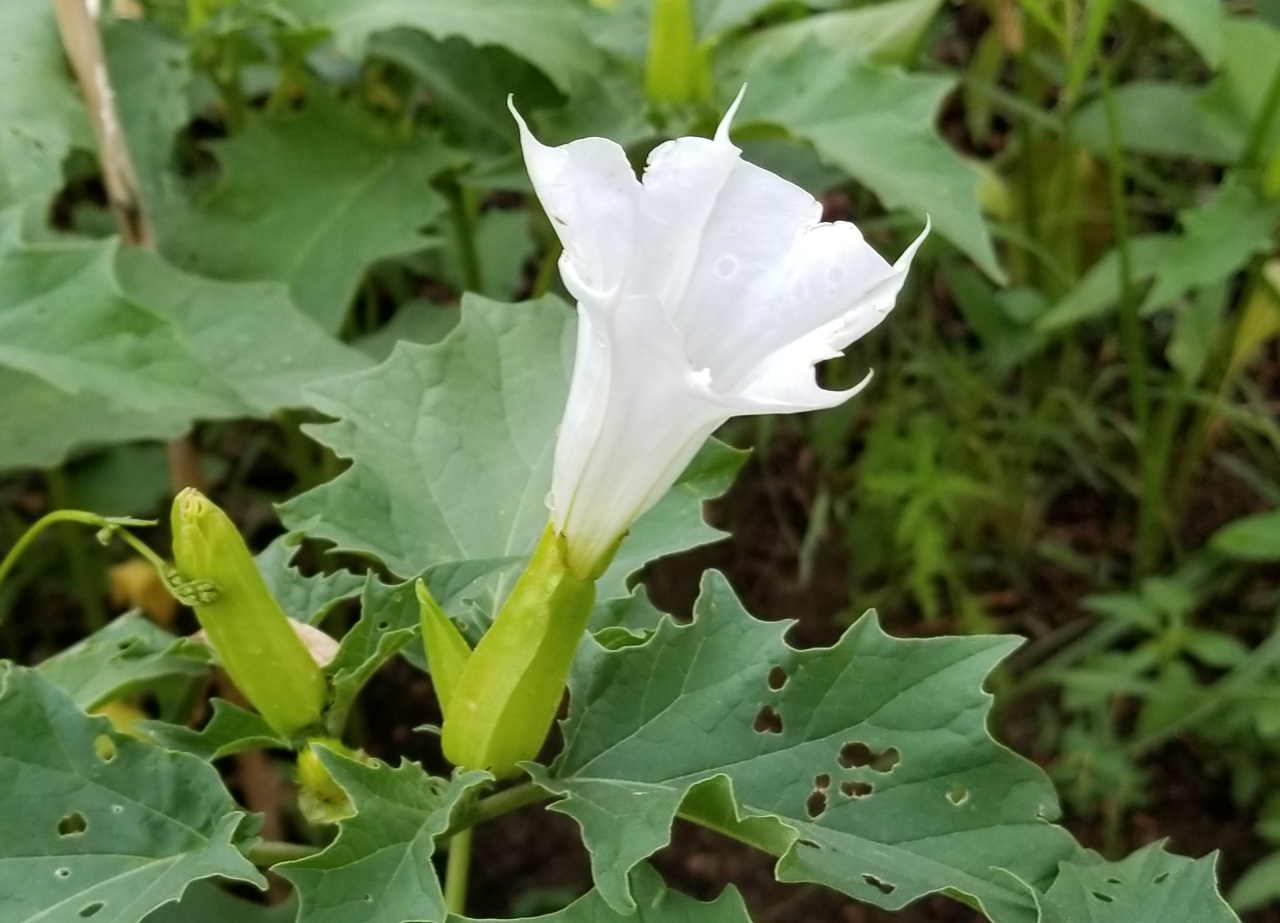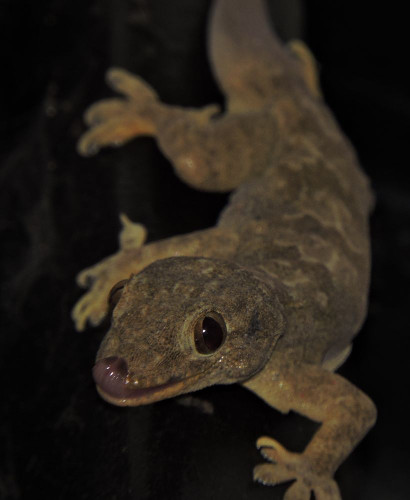THREE HORNED CHAMELION.
Jackson's chameleons are sometimes called three-horned chameleons because males possess three brown horns, one on the nose (the rostral horn) and one above each superior orbital ridge above the eyes (preocular horns), somewhat reminiscent of the ceratopsid dinosaur genus Triceratops. The females generally have no horns.
Jackson’s Chameleons have a pretty long lifespan, especially in captivity, compared to most other types of chameleons. Jackson’s chameleons can live up to 10 years, while most other chameleons will only live for 2-5 years.
The beginning of their scientific name – trioceros is split into two words. Trio meaning three, and keras (ceros) meaning horns. Which in English is: three horns, which refers to the horns on their head. Jackson is the Latinized form of Explorer Frederick John Jackson’s last name, who was the governor of Kenya at the time.
The coloring is usually bright green, with some individual animals having traces of blue and yellow, but like all chameleons, they change color quickly depending on mood, health, and temperature. Adult males reach a total length (including tail) of up to 38 cm (15 in) and females up to 25 cm (10 in), but more typical lengths are 15 to 25 cm (6 to 10 in). It has a saw-tooth shaped dorsal ridge and no gular crest. It attains sexual maturity after five months. The lifespan is variable, with males generally living longer than females. The largest subspecies of Jackson's chameleon is T. j. xantholophus, which has been captively bred since the 1870s.
The three horned chamelion has a very unique walk. With their tail lifted, they walk with slow, jerky movements, while rocking back and forth. When spotted by predators they will freeze and stop moving completely. It has been theorized that they walk like this in order to confuse predators that spot them out in the open.
Three-horned chameleon, is a species of chameleon that is endemic to forests and nearby gardens at altitudes of 1,700–2,600 m (5,600–8,500 ft) in the Rwenzori Mountain, sometimes they are carried by running water to the low lying areas around Mt Rwenzori, i first saw it in my home village kihondo kichwanba in 2021 since it is near Mt Rwenzori.
Why do these chameleons have horns?
Because of this fancy headgear, these lizards are sometimes called 3-horned chameleons. The horns are used to defend the male's territory. They may lock horns and try to push each other off a narrow tree branch.
Are Jackson's chameleons dangerous?
Jackson’s chameleons are classed as “threatened” by CITES because of habitat destruction and because these lizards are captured and sold illegally in the exotic pet trade. As a diurnal, arboreal lizard.
What happens when it bits you.
It contains poisons which when inserted in your body it will definitely kills you.
What animals eat Jackson's Chameleon?
This reptile is up against many predators, and its slow speed does not help with its defense at all. Animals that eat the Jackson’s chameleon while they are young include some species of spiders, birds, snakes.
Jackson’s Chameleons are available in the exotic pet trade, however they aren’t the easiest reptiles to care for, and have specific needs and requirements. They require high humidity, and colder temperatures at night. However, too much humidity and excessive heat can have deadly consequences, and can cause eye infections and upper respiratory infections. If you’re thinking of getting one as a pet make sure you put in the time, effort, and research into giving it the proper care it needs.
Thanks for reading.
Animals used in this educative story are sterillised.
THORN APPLE
Datura stramonium, known by the common names thorn apple, jimsonweed (jimson weed), devil's snare, or devil's trumpet, is a poisonous flowering plant of the nightshade family Solanaceae. It is a species belonging to the Datura genus and Daturae tribe. Its likely origin was in Central America, and it has been introduced in many world regions. It is an aggressive invasive weed in temperate climates.
Datura species, especially Datura stramonium (e.g., jimsonweed), are the focus of scores of case reports that chronicle the toxidrome of anticholinergic toxicity. Mechanisms of toxicity. Toxicity occurs because of the presence of up to 28 belladonna alkaloids, predominated by atropine and scopolamine
Datura stramonium (DS) is a widespread annual plant, containing atropine, hyoscyamine, and scopolamine, which can produce poisoning with a severe anticholinergic syndrome. Teenagers ingest the roots, seeds or the entire plant to obtain its hallucinogenic and euphoric effects.
Datura stramonium, is a plant that contains toxic alkaloids that cause gastrointestinal and central nervous system symptoms when ingested. All parts of the plant are toxic, and the genus has a long history of use for causing delirious states and death. It was well known as an essential ingredient of magical ointments, potions, and witches' brews. The plant may grow together with leguminous crops, mixing with them during harvesting
When ingested in large amount Symptoms may include :
•Blurred or double vision.
•Headache.
•Loss of movement in limbs.
•Problems with swallowing.
•Tingling or numbness of skin.
•Weakness.
•Changes in sound of the voice.
Benefits of Datura Stramonium seeds and leaves.
•The oil extracted from Datura seeds can be used for treating baldness and stimulating the growth of hair.
•Dhatura leaves contain atropine and hyoscyamine which is used as a mind altering drug useful for mental disorders.
•The jimson seeds can be used for the treatment of abscesses and fistulas.
•The Datura leaves and seeds can be used as narcotic, hypnotic, antispasmodic, and anti-asthmatic.
Geckos are small, mostly carnivorous lizards that have a wide distribution, found on every continent.
They are small, mostly carnivorous lizards that have a wide distribution, found on every continent except Antarctica. Belonging to the infra order Gekkota, geckos are found in warm climates throughout the world. They range from 1.6 to 60 centimetres.
Are wall geckos poisonous?
This is a question that many home owners ask, and rightly so. The good news is that wall geckos are not poisonous. In fact, they are actually quite harmless creatures. So if your gecko escapes or you find a wall gecko in your home, there is no need to worry about them harming anyone.
They are able to allow part of the tail to break off if they feel threatened. This will allow them to escape from predators.
Most of the Gecko species are nocturnal which means they are active at night. They have the ability to see well at night which gives helps them to find their prey.
Like a lot of lizards, leopard geckos can drop their tails. They do this to distract the predator that might be trying to eat them. Their tails keep moving for a short duration of time after it detaches. It is a defensive mechanism that distracts the predator long enough so they can run into a hide.
Like a lot of lizards, leopard geckos can drop their tails. Their tails keep moving for a short duration of time after it detaches.
Unlike many other geckos, leopard geckos can actually blink. Other lizards such as crested geckos, day geckos, and house geckos have fixed eyelids and have their eyeballs exposed throughout their whole life.
These types of geckos have a clear membrane that covers their eye that helps keep them moist in addition to licking them as well.
What is the most interesting feature of Geckos?
A Ability to drop their tails
B Nocturnal behavior
C Clear membrane covering their eyes
Wall geckos are an incredibly fascinating type of lizard that are often found in homes. Geckos possess amazing abilities such as climbing, jumping, and clinging onto any surface they can get their feet on! Their gecko-skinned toes have microscopic hairs on it that allow them to create a
House geckos, including wall geckos, are non-poisonous and not harmful to humans. They are nocturnal reptiles that primarily feed on insects and spiders, providing a beneficial service of controlling the spread of these pests. There have been false claims circulating online about wall geckos carrying deadly germs or toxins, Thats not true.








nice articles
Wow intersting
🙏🙏🙏🙏🙏🙏
Fantastic
Thanks for the work dia